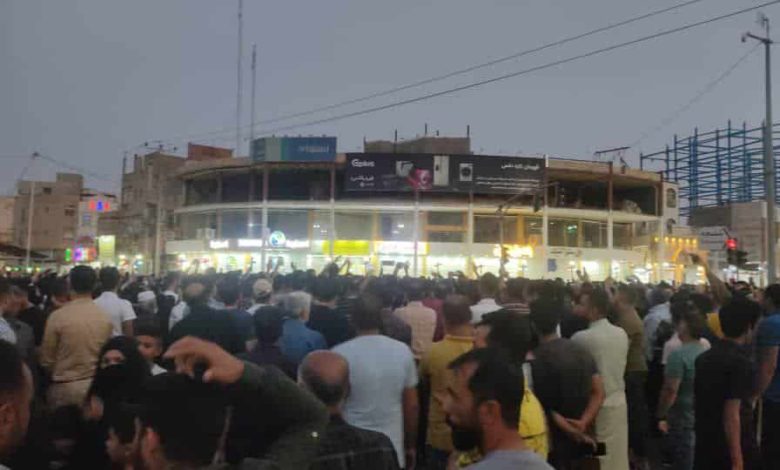How Deceitful Slogans Have Changed Sides

Written by
Mehdi Oghbai
On May 15, amid nationwide protests against poverty, discrimination, and the totalitarian rule of the Ayatollahs, former United States Secretary of States Mike Pompeo met with Maryam Rajavi, the President-elect of the main Iranian opposition. While the political message of the event made headlines, looking at the long history of Iran and the United States provides more than just insightful retrospect.
For more than forty years, whenever the Iranian state has packed a high-density crowd of gruesome full-bearded men and black-veiled women to demonstrate unity and intimidate dissent, they chant: “Death to America” and “Death to the hypocrites!”
The ‘Hypocrites’ is the regime’s pejorative term for the Mujahedin-e Khalq (MEK/PMOI), the longest-standing and most formidable opposition movement against the regime both inside and outside Iran.
Slogans are about drawing lines. They are supposed to unify a group, represent their identity, and set “us” apart from “them.” A captivating motto or phrase is used by actors to draw political or religious boundaries that separate various sets of ideas.
In 1979, when the Iranian people rose up against Mohammad Reza Shah, they expressed anger toward the United States of America because they saw it as a clear protector of the monarchical dictatorship that had ruled over their lives with an iron fist for decades. Months before the 1979 revolution, as US president Jimmy Carter visited Tehran during the Christmas holidays, he toasted the Shah at dinner and praised his ally for establishing “an island of stability in one of the more troubled areas of the world.”
For those tortured young souls in the dark cells of Shah’s prisons (including MEK members), as well as millions of deprived Iranians who were watching this dinner at home, seeing the tyrant enjoying the support of a superpower was not encouraging.
In the end, however, the people prevailed and overthrew the monarchy.
Ruhollah Khomeini who had successfully negotiated his future status with world powers while spending time on the safe shores of France used Western media as well as the clerical network inside Iran, the only group that was not outlawed by the Shah, to seize the leadership of a revolution with which he was not affiliated until it showed signs of succeeding.
Once in power, Khomeini executed former allies. Sadeq Ghotbzadeh, his intermediary in the talks with the Americans back in Paris was among them. He also removed the interim government of Mr. Mehdi Bazargan after Khomeini’s followers stormed the American embassy in Tehran, triggering the hostage crisis and setting the stage for the decades-old enmity against Washington.
Khomeini enjoyed an unprecedented authority that combined religious, political, and revolutionary dominance over a young nation yearning for democracy. His insistence that the revolution’s primary character is “Islamic” rather than democratic was aligned with his aggressive agenda in the region.
In the following forty years, the Iranian regime tried to position itself as the focal point of anti-Americanism in the Middle East. From Sunni extremists like al-Qaeda, al-Shabab, and ISIS to a wide range of Shiite militant groups in Iraq, Lebanon, and Yemen, fundamentalists were buoyed and funded by the biggest state sponsor of terrorism whose heart beats in Tehran.
The regime has also killed more Muslims and more Iranians than any foe. The regime that replaced the monarchy has grown more corrupt and more oppressive than its predecessor while Tehran’s militants in the region are responsible for the misery that continues to plague almost every regional hotspot.
Today, with poverty, discrimination, and oppression at an all-time high, more people are taking to the streets to denounce the clerical regime and its domestic and foreign policies.
After four decades of mullahs’ rule, Iran has changed and so has the United States and the Middle East region. While Iranians and most Muslims alike have learned that the deceitful slogans of the Iranian clerics have been designed for nothing other than filling their own pockets, they assess Washington’s policies based on the degree to which it displays decisiveness and firmness against Tehran’s rulers.
Despite experiencing enormous suffering and losing tens of thousands of members and followers, many Iranians continue to support the MEK with everything they have. Older than the regime itself, the MEK’s unyielding struggle is the main reason and measure for Iranians to differentiate genuine friend from foe.
As the cries for “Death to America” and “Death to the hypocrites” continue to fade away, this chant is being heard louder than ever before:

